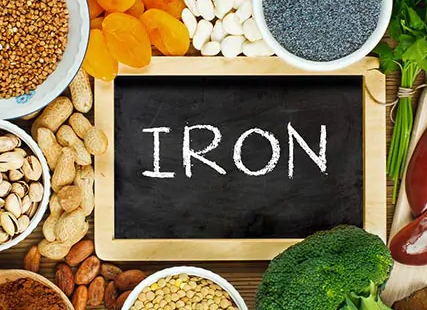- Home
- Editorial
- News
- Practice Guidelines
- Anesthesiology Guidelines
- Cancer Guidelines
- Cardiac Sciences Guidelines
- Critical Care Guidelines
- Dentistry Guidelines
- Dermatology Guidelines
- Diabetes and Endo Guidelines
- Diagnostics Guidelines
- ENT Guidelines
- Featured Practice Guidelines
- Gastroenterology Guidelines
- Geriatrics Guidelines
- Medicine Guidelines
- Nephrology Guidelines
- Neurosciences Guidelines
- Obs and Gynae Guidelines
- Ophthalmology Guidelines
- Orthopaedics Guidelines
- Paediatrics Guidelines
- Psychiatry Guidelines
- Pulmonology Guidelines
- Radiology Guidelines
- Surgery Guidelines
- Urology Guidelines
Higher Iron levels protect against atherosclerosis but increase risk of thrombosis: JAHA

Higher genetically determined Iron levels protective against atherosclerotic disease but increases the risk of thrombosis related to stasis of blood, revealed a study published in the Journal of American Heart Association (JAHA).
The study aimed at determining the effect of genetically determined iron status on carotid intima‐media thickness, carotid plaque, and venous thromboembolism using Mendelian randomization.
Higher iron status was found to increase the risk of venous thromboembolism, decrease the risk of carotid plaque, and have no significant effect on carotid artery intima‐media thickness. These results are consistent with previous studies that suggest higher iron status has a protective role in atherosclerosis but increases the risk of thrombosis related to stasis of blood.
The thrombotic disease is the leading cause of global mortality. The Mendelian randomization technique uses randomly allocated genetic variants to instrument the effect of an exposure in investigating for a causal effect on a particular outcome and is less prone than traditional observational research to environmental confounding and reverse causation. In this study, Mendelian randomization analysis was performed to investigate for an effect of higher genetically determined iron status on venous thromboembolism, carotid plaque, and carotid artery intima‐media thickness.
A genome-wide meta-analysis of 48,972 subjects selected genetic instrumental variables for iron status. Estimates of the genetic association for carotid intima-media thickness and carotid plaque were obtained using data from 71 128 and 48 434 participants, respectively, and estimates of venous thromboembolism were obtained using data from a study of 7 507 cases and 52 632 tests.
Key findings
- Higher genetically determined was associated with an increased risk of venous thromboembolism.
- Odds ratios per SD increase in biomarker levels were 1.37 for serum iron, 1.25 for transferrin saturation, 1.92 for ferritin, and 0.76 for serum transferrin (with higher transferrin levels representing lower iron status).
- In contrast, higher iron status was associated with lower risk of carotid plaque.
- Corresponding odds ratios were 0.85 for serum iron and 0.89 for transferrin saturation, with concordant trends for serum transferrin and ferritin that did not reach statistical significance.
- There was no Mendelian randomization evidence of an effect of iron status on carotid intima‐media thickness.
"These findings support previous work to suggest that higher genetically determined iron status is protective against some forms of atherosclerotic disease but increases the risk of thrombosis related to stasis of blood." concluded the authors.
For further details, click on the link

Disclaimer: This site is primarily intended for healthcare professionals. Any content/information on this website does not replace the advice of medical and/or health professionals and should not be construed as medical/diagnostic advice/endorsement or prescription. Use of this site is subject to our terms of use, privacy policy, advertisement policy. © 2020 Minerva Medical Treatment Pvt Ltd